Struggling with inconsistent injection molding quality that leads to wasted materials and unhappy customers? It’s a real headache, right? I’m here to share how we at CavityMold tackle this, ensuring top-notch results every time because we believe in "Mastering Molding Right."
High-quality injection molding hinges on precise control over key process parameters, meticulous mold design and maintenance, and selecting the right materials. It’s about getting these fundamentals absolutely spot on. I’ve learned this through years of hands-on experience, seeing projects succeed or fail based on these core principles.
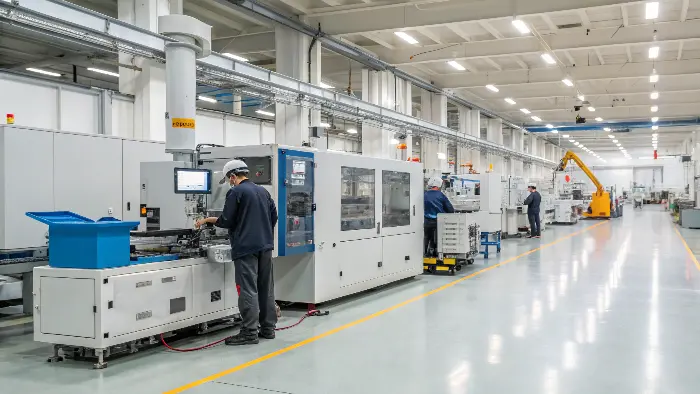
Getting high-quality parts isn’t just luck; it’s a science and an art. We’ve spent years at CavityMold, since our founding in 2009, perfecting this. So, let’s dive into the nitty-gritty of how you can achieve consistently excellent results. Trust me, it’s worth the effort, especially when you’re managing complex projects like Alex does.
How can you improve the quality of injection molding?
Are defects like warping or sink marks plaguing your injection molded parts? These issues can derail production schedules and inflate costs, causing major stress. I’ve been there, and it’s no fun at all! Let’s explore practical steps to significantly boost your molding quality.
Improving injection molding quality involves a multi-faceted approach. Focus on optimizing process parameters like temperature and pressure, ensuring your mold is top-notch, and using suitable materials. Regular machine calibration is also absolutely key. It’s a continuous improvement journey, not a one-time fix.
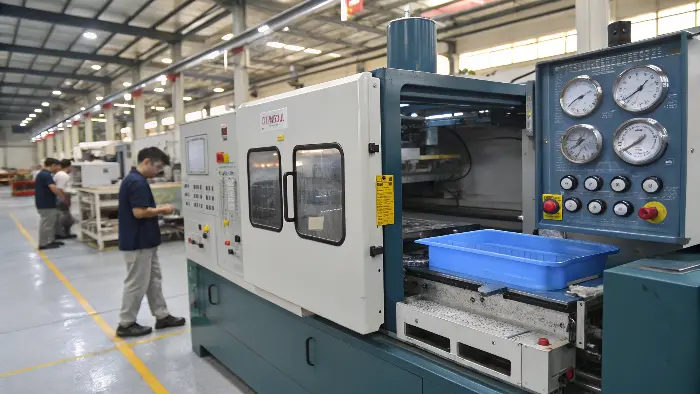
To really get a grip on improving quality, we need to look at several things. I always start with the basics because, honestly, that’s where most problems hide. First, Process Parameters are king. You can have the best mold in the world, but if your process isn’t dialed in, you’re in for trouble.
- Temperature Control: This is huge. Both melt temperature and mold temperature need to be spot on. Too hot, and you risk material degradation or longer cycle times; too cold, and you get flow issues like short shots or weld lines. We use precise controllers and regularly check thermocouples.
- Injection Speed & Pressure: Finding that sweet spot for injection speed, packing pressure, and holding pressure is crucial. It affects how the mold fills, how the part solidifies, and can prevent issues like flash or sink marks. I remember one project where adjusting the pack pressure by just a tiny bit solved a persistent sink mark issue – it was a real "aha!" moment.
- Cooling Time: Don’t rush this! Proper cooling prevents warping and ensures dimensional stability. I’ve seen so many issues arise from cutting this short to chase cycle times. It’s a false economy.
Then there’s Mold Design and Maintenance. A well-designed mold with good venting, balanced runners, and an effective cooling system is half the battle. And regular maintenance? Non-negotiable. We clean and inspect our molds religiously at CavityMold. Finally, Material Selection – using the right plastic for the job, properly dried according to supplier specs, makes a world of difference. It’s all connected, you see.
What is high precision injection molding?
Do your projects demand incredibly tight tolerances and complex geometries, maybe for medical devices or intricate electronics? Standard molding might not cut it, leading to parts that don’t fit or function as intended. Frustrating, isn’t it, especially when a whole assembly depends on it?
High precision injection molding is about producing parts with extremely tight tolerances, often in micrometers, and complex features consistently. It requires specialized machinery, superior mold craftsmanship, advanced process control, and often, specific engineering-grade materials. It’s molding on a whole other level of detail.
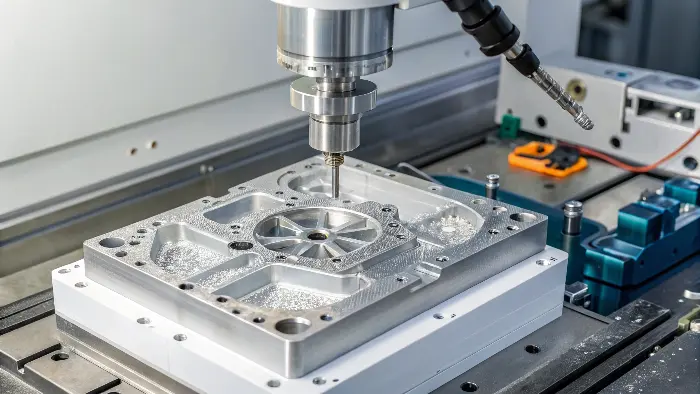
So, what sets high precision molding apart? It’s not just about making small parts; it’s about making parts accurately, every single time, especially when tolerances are razor-thin – think +/- 0.001 inches or even tighter! This is where our expertise at CavityMold really shines.
Here’s what I’ve learned is critical:
- Mold Design & Fabrication: This is where it all begins. The mold itself must be a masterpiece of engineering, built with incredible accuracy using high-precision CNC machining and EDM. We’re talking about features like:
- Ultra-precise cavities and cores: Tolerances on the mold components themselves are often in the single-digit micron range.
- Sophisticated cooling channels: Uniform mold temperature is vital for dimensional stability.
- Perfect gating and venting: These must be meticulously designed to ensure complete fill without defects.
- Machine Capability: You need top-tier injection molding machines with highly responsive controls, consistent shot-to-shot repeatability, and features like closed-loop process control. Injection machine calibration is even more critical here. We ensure our machines are calibrated to the nth degree, regularly.
- Process Control: We monitor everything – melt temperature, injection pressure, speed, screw speed and back pressure, mold temperature, and even cavity pressure sensors – with extreme diligence. Even tiny deviations can throw a part out of spec.
- Material Choice & Handling: Often, high-performance engineering plastics with specific shrink rates are used. Their specific processing requirements, especially drying, must be strictly followed. Plastic material selection becomes a science in itself, considering factors like thermal expansion and moisture absorption.
It’s a demanding field, but the results – perfectly formed, highly complex parts – are incredibly satisfying.
How to increase productivity in injection molding?
Are you constantly battling to meet production targets and reduce cycle times without compromising on that hard-won quality? Slow production means missed deadlines and higher operational costs, which nobody wants. It’s a common struggle in this industry, believe me.
Increasing injection molding productivity involves optimizing cycle times, minimizing downtime, and improving overall equipment effectiveness (OEE). This can be achieved through smart mold design, efficient process parameters, automation, and robust maintenance practices. It’s about working smarter, not just harder.
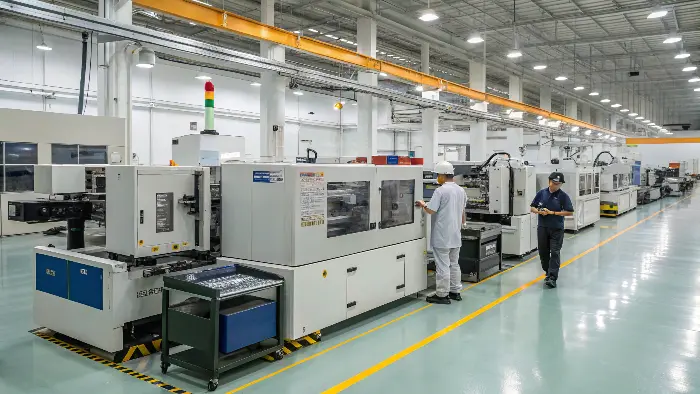
Boosting productivity – that’s the name of the game for many of us, right? It’s not just about churning out more parts; it’s about doing it efficiently and cost-effectively. Here’s how I approach it, drawing from our experiences at CavityMold:
- Cycle Time Reduction: This is a big one. Even shaving off a few seconds per cycle adds up massively over a long production run.
- Optimized Cooling Time: Efficient mold cooling design (e.g., conformal cooling, high-conductivity inserts) can significantly reduce this portion of the cycle. We always analyze where the heat is and how to get it out faster.
- Faster Injection Speed (where appropriate): Balancing speed with quality is key. Sometimes, a faster fill can reduce the overall cycle, but it needs careful control to avoid defects.
- Robotics/Automation: Using robots for part removal, gate trimming, or in-mold labeling can significantly speed things up, improve consistency, and free up operators.
- Minimizing Downtime: Unplanned downtime is a productivity killer.
- Proactive Mold Design and Maintenance: A well-maintained mold is less likely to break down. Implementing quick mold change (QMC) systems also drastically reduces changeover times. I can’t stress enough how important regular cleaning, inspection, and preventative repairs are.
- Reliable Injection Machine Calibration and Maintenance: Keeping machines in top shape prevents unexpected stops. This includes regular checks on hydraulics, electronics, and the barrel/screw assembly.
- Process Optimization:
- Efficient Plastic Material Selection and Handling: Using materials that process easily and ensuring they are properly prepared (e.g., consistently dried) helps maintain a smooth flow.
- Fine-tuning Screw Speed and Back Pressure: This can improve melt homogeneity and plasticizing efficiency, potentially reducing the screw recovery time component of the cycle.
It’s a continuous effort, always looking for those small improvements that add up. I remember we once re-evaluated a multi-cavity mold, optimized the runner system, and improved the cooling. The result? A 12% reduction in cycle time and a much happier client!
How to make injection molding more sustainable?
Worried about the environmental impact of your manufacturing processes? Traditional manufacturing can be resource-intensive, leading to waste and higher energy consumption. It’s a growing concern for everyone, including us at CavityMold, and for clients like Alex who are conscious of their company’s footprint.
Making injection molding more sustainable involves reducing energy consumption, minimizing material waste, and using eco-friendly or recycled materials where possible. It also includes optimizing processes for efficiency and designing products for longevity and recyclability. It’s about being mindful of our impact.
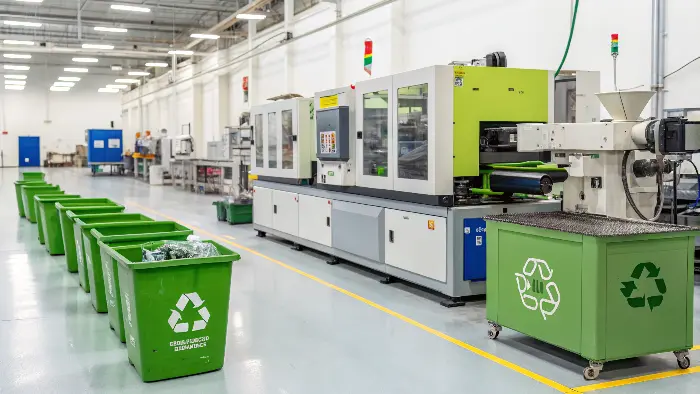
Sustainability in manufacturing is something I’m increasingly passionate about, and injection molding is no exception. It’s not just a buzzword; it’s about responsible business and, often, long-term cost savings too! Here are some areas I focus on to make our operations greener:
- Energy Efficiency: This is a big one, as molding machines can be power-hungry.
- Modern Machines: Newer all-electric or hybrid injection molding machines are significantly more energy-efficient than older hydraulic ones. This is a big investment, but the operational savings and reduced carbon footprint add up.
- Optimized Temperature Control and Cooling Time: Using precise temperature control for the barrel and mold, and efficient cooling systems, reduces energy waste. Don’t overcool or overheat! Insulating hot runner manifolds also helps.
- Material Management: Plastic waste is a major concern.
- Reducing Scrap: Good mold design and maintenance (preventing flash, short shots, etc.) minimizes scrap and rejects. Hot runner systems also eliminate sprue and runner waste, which can be a significant material saving.
- Recycled/Bio-based Plastics: Exploring the use of post-consumer or post-industrial recycled plastics, or bio-polymers, where the application allows. This requires careful plastic material selection, testing, and sometimes process adjustments.
- Regrinding: Properly managing and reusing regrind (ground-up scrap from sprues, runners, or rejected parts) is crucial, ensuring it’s clean and mixed in appropriate ratios.
- Process Optimization for Overall Efficiency:
- Efficient Injection Speed and Pressure: Using just enough energy to fill the part correctly, avoiding excessive pressures or speeds that waste energy.
- Lightweighting Parts: Designing parts to use less material without compromising function is a key sustainability strategy.
It’s a journey, and every little bit helps. We recently switched to a more efficient closed-loop cooling tower system, and the water and energy savings were noticeable. It felt good, you know, to make a positive change not just for the business, but for the bigger picture.
Conclusion
Achieving high-quality, productive, and sustainable injection molding isn’t magic. It’s about diligent control of processes, smart material choices, and excellent mold design and care. Master these, and you’ll master molding right, delivering consistent, top-tier results every time.
